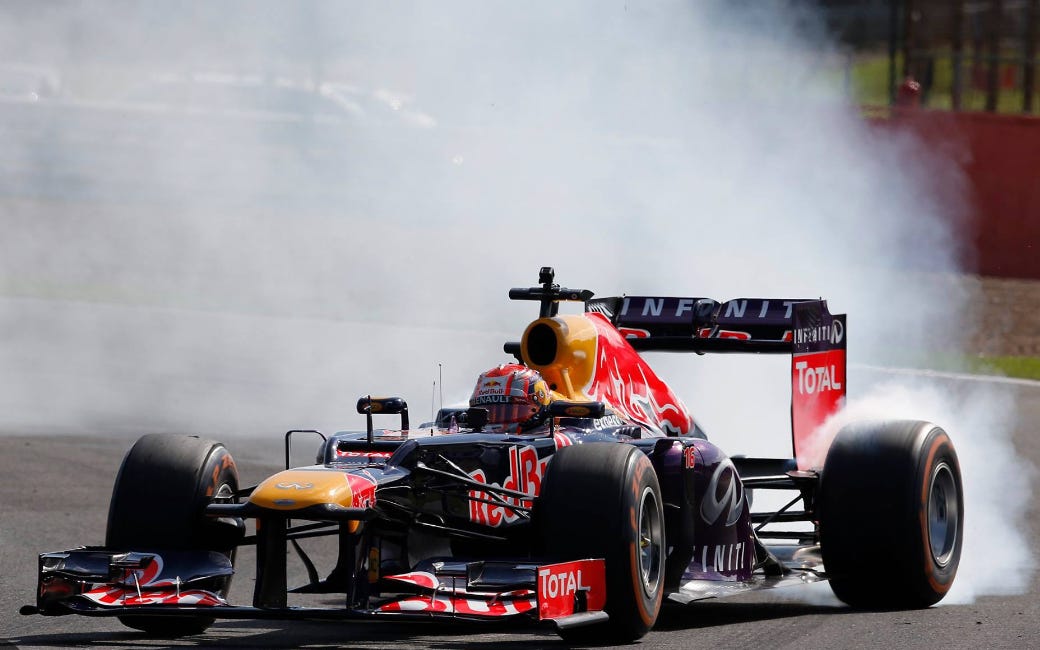Lock ups
The things that cause the smoke (I think)
So we know there’s smoke involved and it’s got something to do with braking, but what exactly IS a lock up…
Skip to the end for a dodgy explanation video using a pen and paper…
Basically…
A driver needs to slow their car down before they turn into a corner. The later they brake, the more speed they’ll carry – good for overtaking, but risky. A late bit of braking will mean a lot of pressure is required to stop a very fast car, very quickly.
When a driver brakes too hard they experience a lock up. Braking is all about slowing down the rotation of the wheels in order to reduce the speed of the car. If too much force is applied through braking, the wheels will not rotate slower they will simply stop rotating altogether. When they stop rotating, they skid along the ground instead - this is a lock up.
When the wheels are locked they are not steerable. In our road cars we have something called ABS (Anti-lock Braking System) which prevents us from braking too hard and causing our wheels to lock, so we don’t lose control. F1 cars don’t have this. When their wheels lock, the car refuses to turn and skids in a straight line. Not ideal when approaching a corner. To regain control, the driver must quickly come off the brake to allow the wheels to rotate again, and then immediately come back on the brake to slow the car effectively.
When the wheels lose traction and skid along the track it creates friction – you’ll see smoke coming off the tyres. Lock ups cause flat spots on tyres. This is when the friction against the track essentially shaves off part of the tyre, ruining the perfectly spherical shape and creating a flat spot on the tyre. This causes vibrations for car and driver, and a likelihood of later lock ups when those flat spots are caught against the track again.
IN A NUT SHELL:
Driver brakes too hard, wheels stop spinning and skid along the track causing friction, we see smoke, tyre gets a flat spot, driver comes off and then back on brakes, job done.


